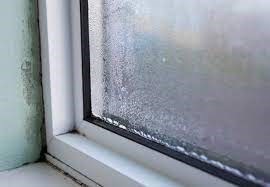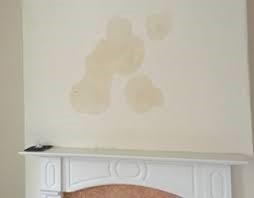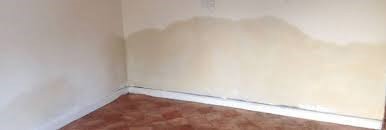Our Policy
The Regulator of Social Housing expects all registered providers of social housing to fulfil their responsibility to take action to protect tenants from hazardous damp and mould. More importantly, our customers rightly expect to be able to live in safe and decent housing.
St Leger Homes of Doncaster wants to do the right thing, and we are firmly committed to providing good quality, safe and decent homes. This commitment is a key objective within our corporate plan and is at the heart of our customer-focused approach to delivering our services.
Providing safe and decent homes includes ensuring that any damp or mould issues identified within our properties are robustly addressed in a reasonable timescale with the collaboration and support of our tenants.
We recognise the wider impact damp, mould and condensation within a home can have on our tenants, and we understand our responsibilities and obligations in addressing such issues when they occur. We have developed a policy to set out our commitment to tackling issues of damp and mould, demonstrating the importance we place on meeting our responsibilities and obligations.
To enable us to fulfil our obligations we also recognise the need to work in true collaboration and partnership with our tenants, working together to achieve a common goal: ensuring our homes are decent, modern, safe and free from hazards.
Our responsibilities in preventing and managing issues relating to damp, mould and condensation;
• Maintaining the main fabric of the building in good condition including: walls, roof, chimneys, doors, windows, guttering, fascia and soffit.
• Ensuring that internal components such as pipework, heating, insulation and ventilation are in good working order.
• Responding to reports of faulty components or repairs in a reasonable timescale (and in accordance with our repairs and maintenance policy).
• Responding to reports of damp and mould in a reasonable timescale.
• Utilising data and other asset intelligence to proactively identify potential issues.
• Delivering the specific commitments contained within the damp and mould policy.
Tenant responsibilities in preventing and managing issues relating to damp mould and condensation;
• Regularly checking for, and reporting in a timely manner, any damp or mould issues. This includes faulty equipment that will hamper the management and control of mould and condensation (e.g. leaks, faulty extract fan, unable to open windows, faulty or absence of heating in habitable spaces etc.).
• Regularly checking for mould and cleaning off mould as soon as it is discovered.
• Following all advice and guidance issued by St Leger Homes on managing and controlling damp and condensation and taking all reasonable steps to reduce and manage condensation within the home. (Advice on managing condensation located on this page)
• Adequately heating the property (recommended between 18-21 degrees) and keeping humidity levels below 60%.
• Providing reasonable access for repairs and inspections, in accordance with the tenancy agreement.
In responding to concerns around damp, mould and condensation, there are some limitations and exclusions to what we will, or are able to provide, and these include, but are not limited to:
• Controlling damp and mould where it is unreasonable or impractical to do so or if any remedial action would be ineffective. For example, poor construction or design (not meeting current construction and living standards)
• Non-habitable rooms, for example: out–buildings and other add-on structures or unheated or uninsulated semi external toilets and storerooms.
• Where internal conditions within a home prevent inspections or remedial work being safely carried out.
• Mould wash treatment will only be carried out by us where this is found to be:
o A persistent or extensive issue.
o Cannot be controlled by the tenant following previous documented attempts.
o Where vulnerabilities prevent the tenant being able to undertake independently.
• Surfaces will be prepared ready for decoration, but decoration will not be provided following works.
• St Leger Homes will not normally reimburse for personal items damaged by mould unless it is proven that we have been negligent.
Managing damp, mould and condensation in your home
When mould appears it is natural to worry about the impact on your home, your health and how best to treat it.
The good news is that more often than not, the issue is usually caused by condensation, and this is something that you can resolve yourself taking some simple actions.
If, after following the advice below, there is still a problem that you have been unable to resolve, call our Customer Access Team on 01302 862862.
They will discuss your issue and arrange a repair or inspection of your home as required.
When discussing your concerns, you may be asked to send us photographs of your issue and its location where possible.
What is condensation?
Condensation is something that happens in all homes when the weather gets colder.
It’s caused when moisture in the air hits a cold surface, like a window or wall, where it turns into water droplets. It can also occur behind furniture where the air flow is restricted.
There is always some moisture in the air – you may notice it in your breath on a cold day, or when the mirror mists over when you have a shower or bath. In the home, most of the moisture in the air comes from every day activities such as washing and drying clothes indoors, cooking, and using the bath or shower. Moisture even comes from us with each person creating around four pints each day, with pets creating four times more!
These days our homes tend to be well insulated, have double glazed windows and are fitted with good quality doors. These are great for stopping draughts and keeping the warmth inside our home, but it also means that moist air can’t escape and that’s the reason why we get condensation. It is usually found in corners and north facing walls or in areas where there is little air circulation such as in built-in cupboards or behind wardrobes and beds, especially when they are pushed up against external walls.
Small amounts of condensation can be found in most homes, but if you do not deal with it, and it is allowed to get worse, then black mould growth can occur. Black mould is almost exclusively caused by condensation. If you see black mould, this can be removed by wiping down with detergents or mould removers. It can be washed out of fabrics, but may leave stains or spoil colours.
It is your responsibility to take reasonable steps to manage condensation in your home and there are proactive actions you can take to prevent and help.
You can do this by:
Here are some tips on how to reduce the amount of moisture in the air in your home:
- Use a lid to cover pans when you are cooking – this stops steam from rising out of the pan and going into the air.
- Close the door when you are cooking or using the bath or shower - this stops steam from escaping into other rooms and causing condensation.
- Dry clothes outside where possible – this stops the moisture from damp clothes building up in your home. If you can’t dry outside then use a tumble dryer to remove moisture from your clothes (ensuring the dryer is properly vented).
- If you do need to dry clothes inside keep the room door closed to stop moisture getting into the rest of the house, open a window so moisture can escape and use a clothes airer rather than drying clothes on radiators, as this creates even more condensation.
- Cover fish tanks – this stops the water from evaporating into the air.
Here's some tips on making sure your home is well ventilated:
- Open a window and use the extractor fan when you are cooking or bathing. An extractor fan is cheap to run, so you can leave it on for a while after bathing to remove any moisture remaining in the air. If you have any problems with your extractor fan please report it by calling us on 01302 862862 (option 1) or emailing tenant.repairs@stlegerhomes.co.uk
- Open windows for a short while at least two or three times each day – this will give moisture that has built up in the air a chance to escape.
- Make sure you do not block any air vents in your home - these are needed to keep the air in your home moving which reduces the moisture level.
- Avoid placing furniture tight up against external walls, instead leave small gaps to allow air to circulate and flow. Occasionally leaving wardrobe doors open will also allow air to circulate freely.
We understand that current energy costs are a concern for most households. However, where possible try to maintain a temperature of 18-21 degrees within your home throughout the day when the weather is cold.
Avoid blocking your radiators or heaters with furniture when they are turned on as this will reduce how well the central heating operates.
If you have rooms that aren’t being used when the weather is cold, leave the thermostatic radiators valves on low instead of turning them off – this will help stop condensation in those rooms.
Avoid using portable gas heaters.
Treating condensation

If you get condensation on your windows or walls you should wipe it off straight away or it can lead to problems like mould.
If mould does start to appear you can use a fungicidal wash to clean the affected area, just be sure to follow the manufacturer’s instructions on the bottle.
You could also get a hygrometer – these cost around £10 and are used to measure the temperature and humidity levels. This can help you to manage the condensation in your home by letting you see just how much moisture your household is producing.
You might consider buying a dehumidifier. Dehumidifiers help to prevent condensation by drawing moisture out of the air.
For more information about condensation – please download our handy guide at the bottom of this page or take a look at the video above.
If you have followed all of the advice above and are still experiencing issues, please contact our Customer Access Team on 01302 862862.
Preventing damp and leaks

Penetrating damp is caused by water coming through external walls or the roof. Damp on internal walls can also happen when there is an internal leak or plumbing problem.
Penetrating damp only appears because of a problem outside the home, such as missing pointing to the brickwork, cracked rendering or missing roof tiles. This allows water to pass from the outside to the inner surfaces. Penetrating damp normally appears as a well-defined ‘damp patch’ which looks and feels damp to the touch.
Black mould is rarely seen on areas of penetrating dampness. This is because the affected area is usually too wet and contains salts which prevent the growth of black mould.
Leaks from water and waste pipes, especially in bathrooms and kitchens, are relatively common. They can affect both external and internal walls and ceilings. The affected area looks and feels damp to the touch and remains damp whatever the weather conditions outside.
A quick examination of the water and waste pipes serving the kitchen and bathroom and the seal around the bath, shower and sinks, plus the external pipework, such as guttering will usually find the source of the problem.
Black mould will rarely be seen with this type of dampness because the area is usually too wet and the chemicals in a waste water leak prevent mould growth.
If you believe your home is suffering from penetrating damp or a leak, please contact our Customer Access Team on 01302 862862.
Rising damp

This is caused by water rising from the ground into your home. Rising damp will only affect basements and ground floor rooms. It will normally rise to around 1.5m above the ground level and usually leaves a ‘tide mark’ low down on the wall. You may also see white salts on the affected areas.
Black mould will rarely be seen where there is rising damp. This is because rising dampness carries with it ground salts which prevent the growth of black mould.
If you believe your home is suffering from rising damp, please contact our Customer Access team on 01302 862862.
Stop Condensation In The Home
pdf | 9754Kb


